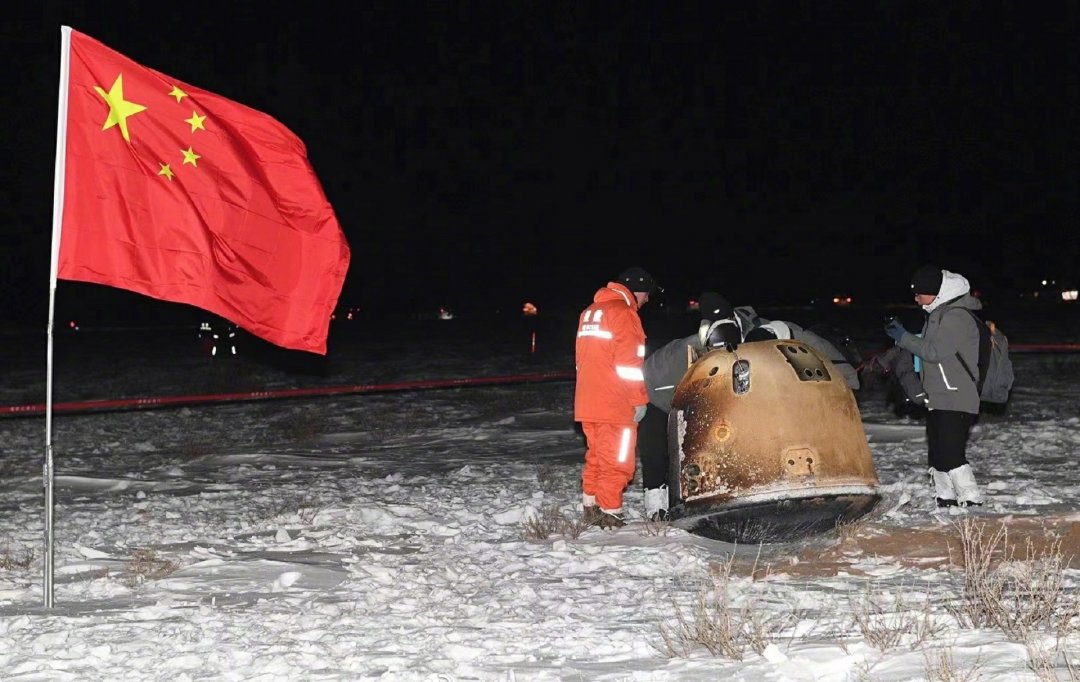US researchers have disclosed that a segment of a Chinese rocket, which collided with the moon’s surface in March 2022, was carrying an unconventional or secret payload.
The study, published in the Planetary Science Journal, identifies this space debris as a component of the experimental spacecraft Chang’e-5 T-1.
Launched in October 2014 from the Xichang satellite launch center in southwestern China, the rocket’s upper stage left a distinctive double crater on the lunar surface that suggested the presence of an undisclosed additional payload, according to the study.
Tanner Campbell, the study’s first author and a doctoral student at the University of Arizona, highlighted the anomaly in the rocket’s behavior. Typically, one would expect a rocket body to exhibit some wobbling due to its asymmetrical structure.
However, the observed tumbling motion was described as “end over end” and remarkably stable. Campbell explained that this stability indicated the presence of a substantial mass on the rocket booster’s top end.

That mass counterbalances the heavy engines at the bottom, weighing around 544kg (1,200lbs) without fuel. Despite the two known instruments on the booster weighing only about 27kg, the researchers noted the unusual symmetry of the resulting double crater.
Drawing a comparison to Apollo missions, which intentionally directed rocket debris to the moon for research, Campbell noted that such missions produced either round or oblong depressions, never a double crater of equal size.
Campbell acknowledged the inherent uncertainty surrounding the mysterious payload, sparking a cascade of potential explanations, from extra support structures to supplementary instrumentation or the inclusion of entirely unknown elements.
Nevertheless, he conceded that uncovering the precise nature of this payload may remain an everlasting enigma.
These revelations highlight the complex dynamics of space debris and open new avenues for unraveling the remnants of space missions imprinted on celestial bodies. The report also underscores the significance of actively monitoring defunct space hardware.
China’s Chang’e-5 T-1 Mission
The Chang’e-5 T-1 mission, designed as a precursor to the more prominent Chang’e-5 mission in 2020 that successfully returned lunar samples to Earth, was launched in 2014.
Five months following the launch of this preparatory mission, astronomers identified an unattributed piece of space debris named WE0913A in 2015.
This celestial object, first detected by astronomers at the Catalina Sky Survey, entered the spotlight in January 2022 when US space debris tracker Bill Gray forecasted its collision with the moon’s far side within months.
Initially believed to be the second stage of a Falcon 9 rocket from Elon Musk’s SpaceX, subsequent observations and analysis of orbital data suggested a connection to China’s Chang’e 5-T1 rocket.
On the other hand, Chinese officials disputed this association and claimed the rocket had disintegrated in Earth’s atmosphere years ago.

Meanwhile, images from NASA’s Lunar Reconnaissance Orbiter (LRO) also revealed an unexpected development at the crash site: not just one but two overlapping craters at the Hertzsprung crater on the moon’s far side.
This phenomenon raised eyebrows, as, according to Arizona State University, at least 47 NASA rocket bodies have previously impacted the moon, yet none had produced a double crater.
In June 2022, NASA acknowledged the unexpected nature of this double crater, setting the stage for heightened curiosity. To unravel the mystery surrounding WE0913A, researchers scrutinized its behavior in flight and the characteristics of the craters it left behind.
By meticulously examining how sunlight reflected off the debris as it tumbled through space and by comparing these observations with simulations, the researchers pinpointed a remarkable similarity to the Chang’e 5-T1 rocket.
“This is the first time we see a double crater,” Campbell said. “We know that in the case of Chang’e 5 T1, its impact was almost straight down, and to get those two craters of about the same size, you need two roughly equal masses that are apart from each other.”
While WE0913A marks the first instance of unintentional space debris colliding with the moon, human-made satellites crashing onto the lunar surface are not unprecedented.
In 2009, NASA intentionally collided with its Lunar Crater Observation and Sensing Satellite at 5,600 mph (9,000 km/h) into the moon’s south pole.
This deliberate impact created a plume that facilitated scientists in detecting chemical signatures indicating the presence of water ice. Additionally, as part of its disposal method, NASA directed the Apollo program’s Saturn V rockets toward the moon.
- Contact the author at ashishmichel(at)gmail.com
- Follow EurAsian Times on Google News




